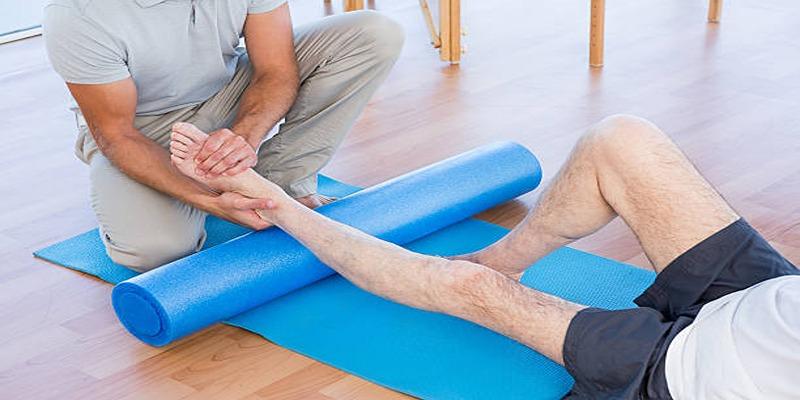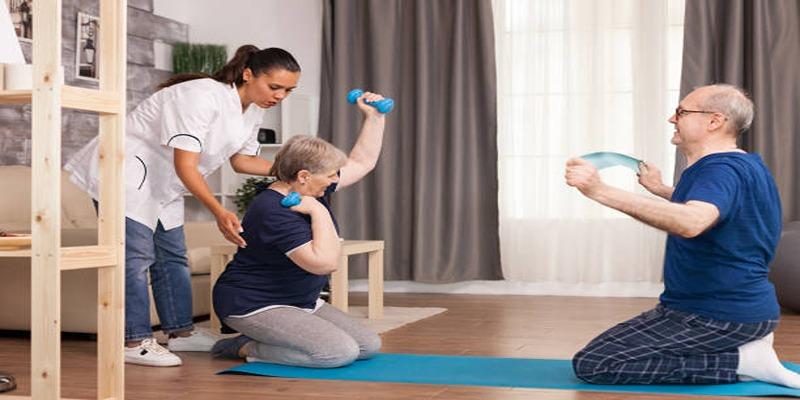Genu valgum, or knock knees, is a fascinating condition where the knees angle inward, causing them to touch when standing straight. This unique alignment can affect people of all ages, leading to changes in how we walk and sometimes causing discomfort or pain in the legs. Addressing genu valgum often involves a combination of targeted exercises and treatments aimed at strengthening the muscles surrounding the knee joint, as well as improving overall posture and alignment. These exercises play a crucial role in not only alleviating the symptoms associated with genu valgum but also enhancing stability and balance, which can prevent future complications. By focusing on the right exercise regimen, individuals can work towards a healthier, more aligned posture, ultimately leading to improved mobility and quality of life.
What Causes Genu Valgum?
Genu valgum, commonly referred to as "knock knees," can arise from a variety of factors. One significant cause is genetic predisposition, where individuals may inherit a tendency to develop this condition from their family. Obesity is another contributing factor, as excess weight can place additional strain on the knee joints, leading to misalignment over time.
Nutritional deficiencies, particularly a lack of vitamin D and calcium, can also play a role, as these nutrients are crucial for maintaining strong bones and overall skeletal health. Certain medical conditions, such as ricketsa disorder caused by severe vitamin D deficiencyor arthritis, which leads to joint inflammation and degradation, can exacerbate the issue.
Symptoms of Genu Valgum:
Individuals with genu valgum may experience a range of symptoms, including:
- Knee pain or discomfort, particularly during physical activity
- Difficulty walking or running
- Increased wear on the knee joints, which may result in arthritis
- Muscle imbalances and weakness in the lower extremities
Effective Exercises to Correct Genu Valgum:
1. Strengthening the Hip Abductors
Hip abductor muscles play a crucial role in stabilizing the pelvis and preventing excessive inward movement of the knees. Strengthening these muscles can help correct genu valgum.
1 . Side-Lying Leg Raises: How to Perform:
- Start by lying on your side with your legs straight and comfortable.
- Now, slowly lift your top leg, keeping it straight and perfectly aligned with your bodyfeel that stretch!
- Lower it back down gently, ensuring it doesn't touch the other leg.
- Challenge yourself with 2-3 sets of 10-15 repetitions on each side and feel the burn! Lets get moving!
2 . Clamshells: How to Perform:
- Lie on your side with your knees bent at a comfy 90-degree angle, keeping your feet together.
- With your feet still together, lift your top knee while keeping your hips nice and stable.
- Gently lower it back down.
- Aim for 2-3 sets of 10-15 repetitions on each side. You've got this!
2. Strengthening the Quadriceps
Strong quadriceps can help support the knee joint and improve alignment.
1 . Wall Sits: How to Perform:
- Stand with your back against a wall and slide down into a seated position, keeping your knees at a 90-degree angle.
- Hold this position for 20-30 seconds, gradually increasing the duration as you gain strength.
- Repeat 2-3 times.
2 . Step-Ups: How to Perform:
- Find a sturdy step or bench and get ready to elevate your workout!
- Step up with one foot, bringing the other foot to join it at the top, then step back down with control.
- Alternate legs and challenge yourself with 2-3 sets of 10-12 reps on each side for a powerful lower body burn!
3. Stretching Exercises
Incorporating stretching can enhance flexibility and further assist in realigning the knees.
Standing Quad Stretch: How to Perform:
- Stand tall and proudly pull one foot towards your glutes, keeping those knees close together for a great stretch!
- Hold that stretch for 15-30 seconds, feeling the benefits, then switch legs.
- Keep the momentum goingrepeat 2-3 times on each side for maximum flexibility!
Benefits of Exercise for Genu Valgum:

Incorporating specific exercises into the routine of individuals with genu valgum can yield numerous benefits, significantly enhancing their overall leg health and functionality. Here are some key advantages:
1. Muscle Strengthening:
Targeted exercises fortify critical muscle groups, including the quadriceps, hamstrings, and hip muscles. By building strength in these areas, individuals can improve overall leg stability and support their joints more effectively, which is crucial for maintaining proper movement patterns during various activities.
2. Improved Alignment:
Corrective exercises play a vital role in promoting better alignment of the knees and hips, which is essential for minimizing the inward angling of the knees often seen in genu valgum. Achieving proper alignment not only enhances physical appearance but also contributes to reduced stress on the knee joints, potentially preventing future complications.
3. Increased Flexibility:
Engaging in stretching exercises is key to enhancing flexibility in the hips and knees. This increased flexibility allows for a greater range of motion, making everyday activities such as walking, running, or even sitting more comfortable and efficient.
Tips for Implementing an Exercise Program:

- Consult a Healthcare Professional: Before starting any new exercise routine, it is essential to consult with a healthcare professional or physical therapist, especially if you have existing knee issues.
- Start Slowly: Begin with basic exercises and gradually increase intensity and duration as your strength improves.
- Maintain Consistency: Aim to perform exercises 3-4 times a week to achieve the best results.
- Listen to Your Body: Pay attention to any discomfort or pain during exercises.
- Combine with Other Treatments: Exercises can be complemented with other treatments such as physical therapy, braces, or orthotics, as recommended by a healthcare provider.
Conclusion:
Correcting genu valgum is a gradual process that requires commitment and consistency. Incorporating effective exercises targeting muscle strength, flexibility, and balance can significantly improve knee alignment and alleviate associated discomfort. Remember to consult with a healthcare professional before embarking on any exercise regimen, ensuring that your approach is safe and tailored to your individual needs. By investing time and effort into these exercises, individuals with genu valgum can enhance their quality of life and enjoy greater mobility.







